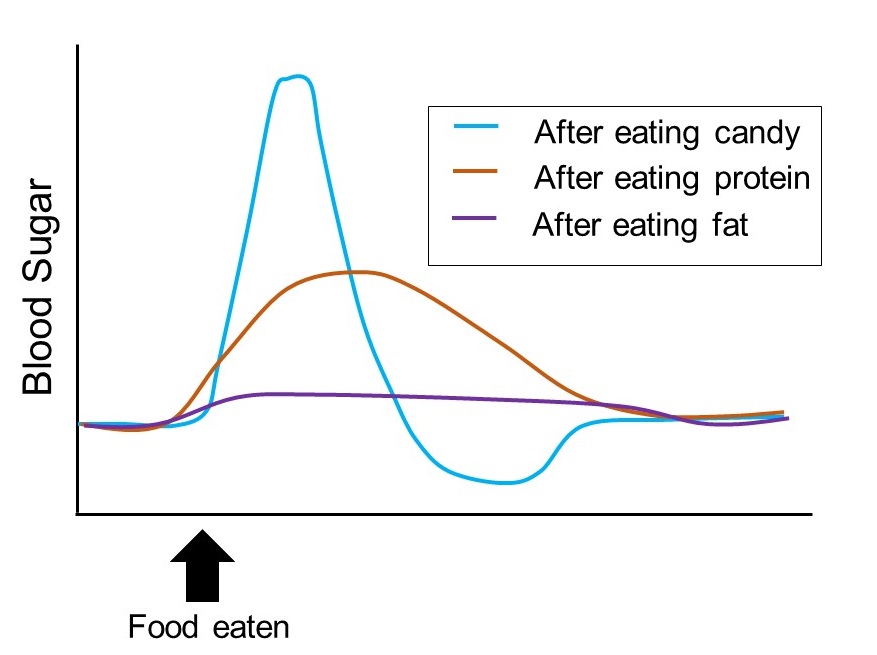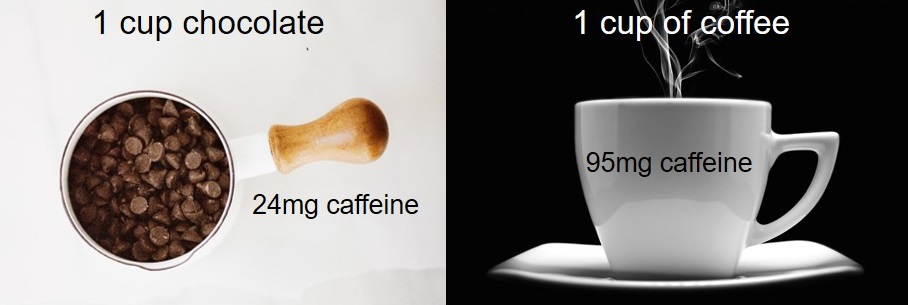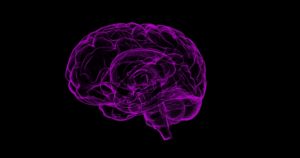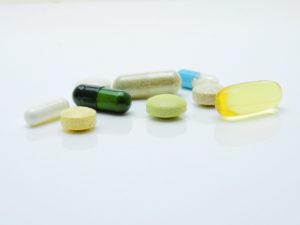It’s Halloween time, and our kids have raked in sugar by the bucket-full, literally. Time for parents to get ready for a week or two of mood cycling kids, with sugar-induced bouncing off the walls followed by those crashes that follow, right? Well, maybe not! For generations, parents have warned their children (and each other) that too much sugar can lead to a “sugar rush” or a “sugar crash” in kids. I’ll admit that I’ll often grab a few gummy bears or some Starbursts with the intent of boosting my mood during the day. It turns out, my efforts may have been futile.
I initially started this post with the intent of finding remedies for our little sugar zombies to ease the effects of that Halloween sugar binge. But as I searched the science, I found something that surprised me: study after study testing the effects of sugar intake on kids finds no real effect on mood! Even when scientists looked for effects of high sugar intake on kids that would likely be more sensitive to sugar (kids with diagnosed hyperactivity, for example), they still saw no effects on mood. The levels of sugar that were fed to the children in these studies often far exceeded what they would normally take in, even when eating a few candy bars.
This means that scientist are pretty darn sure that excessive sugar intake won’t give your child a rush or a crash!
So let the kids eat the candy, right?
Well, let’s first explore what’s going on in their little bodies before you make that call. Your kids’ bodies are no stranger to sugar. Glucose is a major energy source for all the cells in the body, and it’s what our bodies break down all other forms of sugar into. In most cases, our bodies are quite good at regulating the levels of glucose in our blood. When levels of glucose get a bit too high, your pancreas produces a hormone called insulin that tells your body to break that glucose down and get rid of it.

Your kids likely have a healthy metabolism and a healthy ability to make insulin, so even a large amount of sugar can be cleared out effectively. That’s why they didn’t get sick last night after they snuck all those pieces of candy while you walked around the neighborhood. This means that taking in too much sugar on one night, and maybe even frequently for a week or so afterwards, isn’t likely to hurt your child.
But if you’re like me, maybe you’re thinking, “I’ve SEEN my kid go crazy after eating sugar! How can that research be right?”. Well, sometimes, the things that doctors and parents see just aren’t represented out there in the scientific literature. And while kids vulnerable to hyperactivity weren’t affected by sugar intake, researchers didn’t look at kids who are particularly susceptible to large blood sugar fluctuations. My daughter about loses her mind when she hasn’t had food in awhile, and there has to be some genetic component, because I also become…less than pleasant if my blood sugar gets low.
When you eat refined sugars like those found in candy, you get some pretty big blood sugar spikes. In response, your pancreas releases quite a bit of insulin and it pulls your blood sugar way low. Your body is on a roller coaster, and that is supported by scientific evidence. Here’s what your blood sugar tends to look like after you eat a lot of refined sugar.

How can we stop the blood sugar roller coaster?
So if you don’t believe the research and you want a way to stop the blood sugar fluctuations in your kids to help with mood swings that you might be seeing, there are some things you can do. The overall goal is to balance out those peaks and valleys in the blood sugar, so you need something to help with that. The best way to do it is to slip in some protein, fiber, and fat while they’re eating the candy. A great source is nuts. Some candies, like Almond Joys or Snickers already come with nuts in them, and that could help, but may not be enough to counter the sugars your child is consuming. Maybe make a deal: one candy bar for 10 almonds, or a piece of beef jerky. It may prevent those sugar highs and lows that we moms have definitely seen.
But wait! Maybe it’s not the sugar that causes the mood swings!
Perhaps it isn’t surprising that we’ve had such a strong belief about candy and mood swings, because there are probably times that you have seen mood swings in your kids, after they have eaten a candy bar or two. But that’s probably not because of the sugar in the candy bar, it’s because of the chocolate.
So what in the chocolate can make your kids bounce like a ball, and then crash like a freight train?
Caffeine!
Chocolate contains caffeine, and probably more than you think.

There’s a great blog post that details how much caffeine is found in different types of chocolate. One cup of milk chocolate has 24mg of caffeine. That’s roughly a quarter of what you consume in your daily cup of coffee. Dark chocolate contains even more. A cup contains a whopping 138mg of caffeine! For adults who are used to a nice cup of caffeinated coffee each morning, a bit of chocolate probably won’t do much unless we consume it in large quantities. Kids are small, though, and may be more reactive to smaller quantities of caffeine. But what else contributes to the effects we see?
Theobromine:
Theobromine is a stimulant in chocolate that acts in a similar manner to caffeine.
Phenylethamine:
Phenylethamine is a chemical that passes into the brain and makes it produce dopamine, which is a feel-good chemical in the brain. Dopamine is the same chemical that you produce when you are in love, or when you experience excitement and euphoria.
Anandamide:
Anandamide is a chemical that is actually similar to the substance that is responsible for the euphoric effects of cannabis! As a result, it gives you some of the same “high” feelings as marijuana does.
The way chocolate works on your and your child’s brain is actually a beautiful coordinated effect. The phenylethamine causes your brain to produce that feel-good hormone, dopamine. Caffeine then makes your brain even more sensitive to dopamine. This, along with the euphoric effects of the anandamine make you feel really good. And finally, both caffeine and theobromine also cause your adrenal glands to produce adrenaline, which makes you jumpy. So after your child eats that chocolate, he/she is alert, happy, and jumpy.
But what about that crash afterwards?
Unfortunately, that happy mood that your child gets after eating chocolate doesn’t last forever. Once the effects of the chocolate wear off and that dopamine breaks down, the euphoria disappears. Your child actually goes into a dopamine withdrawal, and often ends up craving more chocolate (perhaps begging you for one more piece). Did you know that the physical reasons for this post-chocolate crash are the same ones that make you depressed and sad after a breakup with a partner? That dopamine feels amazing when your brain is flooded with it, but when it’s gone, you just want it back again.
This is why some think that chocolate should be classified as an addictive drug, rather than a food.
So do we let our kids eat all that post-Halloween candy?
Your children will probably be really happy to see my response – there’s no inherent danger to letting your kids binge from time to time on that bucket of sugar you may be now hiding on the top of your fridge. While long-term sugar intake can lead to obesity, the science says that a week of it probably won’t do much, as long as it doesn’t become a habit. And as far as your child’s moods go, you may just want to replace some of the chocolate in their sticky little hands with a gummy bear or two and give them a few nuts to go along with them.
Contributing References
Mantantzis, K., Schlaghecken, F., Sünram-Lea, S. I., & Maylor, E. A. (2019). Sugar rush or sugar crash? A meta-analysis of carbohydrate effects on mood. Neuroscience & Biobehavioral Reviews.
Wolraich, M. L., Wilson, D. B., & White, J. W. (1995). The effect of sugar on behavior or cognition in children: a meta-analysis. Jama, 274(20), 1617-1621.
Milich, R., Wolraich, M., & Lindgren, S. (1986). Sugar and hyperactivity: A critical review of empirical findings. Clinical Psychology Review, 6(6), 493-513.
Rosen, L. A., Booth, S. R., Bender, M. E., McGrath, M. L., Sorrell, S., & Drabman, R. S. (1988). Effects of sugar (sucrose) on children’s behavior. Journal of consulting and clinical psychology, 56(4), 583.
Behar, D. (1984). Sugar challenge testing with children considered behaviorally” sugar reactive.”. Nutrition & Behavior.
Parker, G., Parker, I., & Brotchie, H. (2006). Mood state effects of chocolate. Journal of affective disorders, 92(2-3), 149-159.
Al Sunni, A., & Latif, R. (2014). Effects of chocolate intake on perceived stress; a controlled clinical study. International journal of health sciences, 8(4), 393.
Engler, M. B., & Engler, M. M. (2004). The vasculoprotective effects of flavonoid-rich cocoa and chocolate. Nutrition Research, 24(9), 695-706.
Latif, R. (2013). Chocolate/cocoa and human health: a review. Neth J Med, 71(2), 63-8.
Scholey, A., & Owen, L. (2013). Effects of chocolate on cognitive function and mood: a systematic review. Nutrition reviews, 71(10), 665-681.









